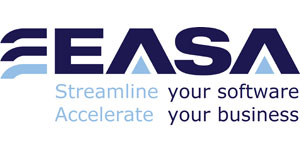
Latest News
December 1, 2014
From Excel to Enterprise App
 It’s been said that Excel® is the most commonly used engineering software. However, when spreadsheets are pushed beyond the role of a desktop solution into the role of an enterprise tool, serious problems arise. EASA helps companies overcome these issues by making spreadsheets “behave” like enterprise applications.
It’s been said that Excel® is the most commonly used engineering software. However, when spreadsheets are pushed beyond the role of a desktop solution into the role of an enterprise tool, serious problems arise. EASA helps companies overcome these issues by making spreadsheets “behave” like enterprise applications.
Spreadsheets in Engineering
Despite huge advances in CAD, CAE and PLM tools, spreadsheets remain widely used in engineering and manufacturing. Excel is flexible, easy to use, and powerful, and as such is a valuable tool for configuration, pricing and proposal generation; preliminary design; engineering calculations; and design tables for CAD.
If the author of a spreadsheet is also the main user, then Excel’s desktop nature is acceptable. However, when a work-process requires the deployment of spreadsheets to multiple users, then complications occur.
Typical symptoms include:
- Multiple versions of important spreadsheets residing on many desktops.
- No version control—which is the correct and current version?
- No audit trail—who used which version of a given tool on a given date for a given project?
- No collaboration or ability to share results.
- Risks of exposed intellectual property
- No ability to link to other systemssuch as CAD, CRM, PLM.
Benefits include:
- A repository of version-controlled tools; users cannot access an incorrect version.
- User-friendly browser-based interfaces ensure correct and consistent usage.
- Web applications can be linked with other enterprise software.
- Users can save their work to a central repository, facilitating collaboration.
- An automatically generated audit trail provides a record of usage.
- Intellectual Property is protected; users cannot see inside the “master” spreadsheet.
Subscribe to our FREE magazine, FREE email newsletters or both!
Latest News







